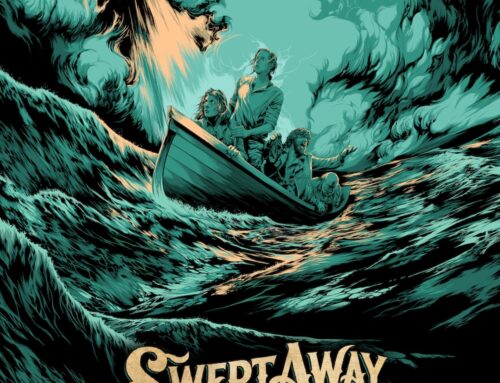 Guest Post by Scott Kaminski
Guest Post by Scott Kaminski
As a general rule, everyone thinks they have a great sense of humor.
And, after carefully reviewing the laws of probability, there’s no way that could even be remotely possible.
When it comes to using humor in marketing, advertising and public relations, we often have to step back and answer a few questions before proceeding down a path of knock-knock jokes, current event inspired memes and company social media postings which could potentially make your mother-in-law cringe.
Does using humor fit with your brand and brand voice?
Some brands seem to be perpetually planted in messaging which either plays it straight or tugs at the heartstrings – which is completely fine and respectable.
Others may currently use humor, or be in industries which lend themselves to making customers laugh in order to engage with their brand and buy their product.
And finally, there are businesses where the use of humor as an aspect of their brand voice would simply be a detriment to the bottom line.
For instance, somewhere there is a funeral home owner who thinks he’s the undertaker’s gift to comedy. Sadly, his industry is one (among many) where employing humor as part of his brand would most likely detract from his otherwise compassionate nature (which is very likely the more appropriate response, regardless of whether Aunt Mildred was asking for it or not by taunting that obviously rabid dingo).
Is your type or brand of humor universal?
Irreverent humor has its place in many parts of our society – backyard barbecues, comedy clubs, people you may follow on Twitter, and late night television shows.
For the aforementioned business ventures, irreverence makes sense and rings the registers. For the backyard barbecue and Twitter, well, you’re on your own.
As a business or other professional venture (charitable organization, etc.), making jokes that push the limits may not be such a good way to acquire new customers and/or maintain relationships with current stakeholders.
You can certainly employ humor in your marketing efforts, but it should be more universal in nature and tone.
Make it something that will make your customers smile. Don’t make it something that makes them cringe. Ever.
Use the Mother-in-Law Test: Ask yourself, “Is this something that would make my mother-in-law blush or question her child’s choice in significant others?” If the answer is, “Yes” than it’s best you move on from the concept and get to rewriting.
Is your use of humor in marketing your company sustainable?
Using humor in marketing, even only if only strategically, is a commitment to your time and resources like any other day-to-day business decision.
Whether it be viewed through the lens of proper staffing, having enough fodder for content or simply having the capacity to consistently generate new content, if you start using humor in your marketing you should intend on keeping up with it.
If not, you run the risk of the joke sticking out like a throbbing, cartoonish sore thumb against the backdrop of everything else you and your company have done (or may do in the future).
Whatever you choose, be consistent – your customers will appreciate it.
Should I use humor if my company is B2C? What about B2B?
Again, it depends.
The use of humor in B2C organizations and brands is much more common than in their B2B counterparts. Like any other marketing decision, what do the data say?
Take a close look at your competitors (direct and indirect) and see if they are using humor in their marketing. If not (and it’s otherwise a fit for you), using humor in your marketing efforts may be a way to further differentiate you from your competitors.
When it comes to B2B marketing, many companies and the folks who run them may be reluctant to add humor as a component of their marketing mix.
Provided it’s a fit for your brand and you have the capacity to keep it up, don’t be afraid. In many instances this may end up being a key differentiator for you and your business.
In any event, make sure you get buy-in on using humor at the highest levels of your organization.
The saddest joke writer is one who went rogue and is no longer gainfully employed.
How far is too far with humor?
With the dizzying array of marketing collateral currently being distributed and managed by marketing departments (e-mail campaigns, direct mail pieces, social media content, blog postings, etc.), the opportunities to employ humor are practically endless. Keep in mind I did not say infinite.
Ultimately, the job of marketing, advertising and communications is to sell your company’s products and services. Adding humor to the mix is fine, as long as it never overpowers or detracts from your core message or value proposition. Once it does, you’ve gone too far.
Sadly, history is filled with these sorts of cautionary tales – where people fondly recall incredibly funny commercials, but can never remember the actual product or service which was being sold.
Don’t be that commercial – especially if you can willingly avoid it.
All this is great, but how do I get started?
1. Pick your voice.
Edgy? Sarcastic? Aloof surfer dude? You need to first determine what persona or tone will resonate most with your audience. And, taking into account social media channels, that also includes picking a voice which your audience will happily and regularly engage with.
2. Test
If you want to start using humor, you need to employ a test audience, preferably both inside and outside of your workplace. Your business is too important not to get some data on what tone may or may not work, and how it will be received in the marketplace before a widespread launch.
Start with a few social media postings or A/B test e-mail subject lines or body copy to see if any red flags or objections arise.
3. Plan your content.
Like any good marketer or communicator, you need to plan out your content. Even if it’s just a simple, straw man outline of what you might like to say surrounding upcoming promotions or select holidays, you’ll be way ahead of those organizations just winging it.
The more thought you put into this on the front end, the more benefit to your audience receiving the final messaging.
4. Evaluate and act.
After adding humor to your marketing mix, be sure to monitor things closely and keep an eye on your business metrics. You may see a measurable uptick in open rates, engagement and customer satisfaction.
And, depending on your audience, it’s possible that you may see little or no measurable change at all. If you need to modify your messaging in any way, it’s always best to have the data to back up your decision.
The most important thing to do is twofold:
- Keep trying new things and testing them in an effort to push and grow your business, and
- Regardless of the outcome, keep your own sense of humor intact. It may be fun, but no one said this would be easy.
And for goodness’ sake, lay off the knock-knock jokes.
Image: Seth Doyle via Unsplash, CC Zero
 Scott Kaminski is a client-side corporate storyteller who currently manages marketing communications and public relations for Häfele America Co., a manufacturer and distributor of hardware, organizational and LED lighting solutions. A former U.S. Navy print and broadcast journalist and Philadelphia native, he is a lifelong student of writing and connecting with audiences by practically any means at his disposal. Connect with him on Twitter.
Scott Kaminski is a client-side corporate storyteller who currently manages marketing communications and public relations for Häfele America Co., a manufacturer and distributor of hardware, organizational and LED lighting solutions. A former U.S. Navy print and broadcast journalist and Philadelphia native, he is a lifelong student of writing and connecting with audiences by practically any means at his disposal. Connect with him on Twitter.









[…] Bell ran a paid lens for Cinco de Mayo that turned users heads into a giant taco. It’s totally silly and gave them 224 million views in 24 hours. That’s a powerful shot of word-of-mouth […]
Humor is not only attention grabbing but it also keeps your attention. These tips are great!